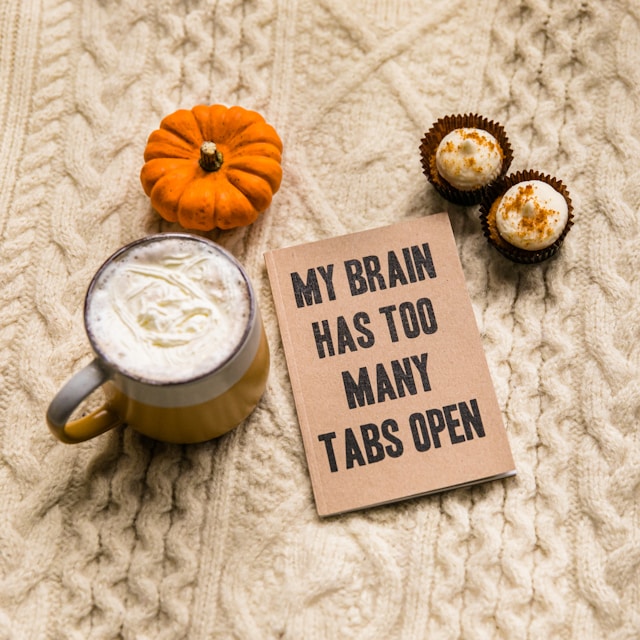When it comes to user experience (UX), there are a lot of factors you need to consider. One of these is cognitive load, which has a lot of implications for UX. But what is cognitive load, and why does it matter?
Essentially, it’s about the mental effort a user needs to navigate your interface. It can play a crucial role in user satisfaction and experience. If they need too much mental effort, they’ll have a bad time. Think of it like a computer–run too many programs, and it will crash.
In this article, we’ll delve into the pragmatic aspects of cognitive load in UX/UI. Stay tuned as we examine its role in user experience design.

What Is Cognitive Load?
John Sweller coined the term Cognitive Load Theory (CLT) in 1988. He suggested that human memory can only hold a small amount of information at a time. This includes long-term memory used to recall information. As a result, instructional methods should avoid overloading it.
This theory was, at the time, for educators and instructional materials. After all, if students have too many things to look at, it’s easy to become distracted. Therefore, it makes it difficult to learn.
Although it’s an educational concept, CLT has found a very important place in UX. Web browsing and using apps is usually a more casual activity than learning. That said, users still have a lot of things to pay attention to. If your interface has too much going on, it will frustrate your users.

What’s Cognitive Load Theory in UX/UI?
In UX/UI, cognitive load theory is all about how much information is on the screen. Users visiting a new site have to learn the layout, navigation, and interactions. Even if the site is familiar to them, users have to carry this knowledge with them and apply it.
There are also different types. After all, when users visit your site, they aren’t doing so in a vacuum. Let’s say they’re shopping for a new car, for example. Their cognitive burden includes budget constraints that they need to keep in mind.
- Extraneous load: Processing that takes up cognitive resources but doesn’t help the user with their goals. For example, fonts, icons, and imagery on the site.
- Intrinsic load: Processing involving new information and keeping track of their goals.
Intrinsic cognitive load is actually important. When users interact with your product, they’re doing so to try to achieve a specific goal. It’s your job to provide the user with information that helps them to achieve it.
However, you should try to minimize extraneous cognitive load. This distracts the user from the goal, which is the opposite of what you’re trying to do. Currently, there is no way to improve the processing power of the human brain. So, as a designer, all that you can do is minimize distractions.
A few different factors add to the mental load:
- Complicated procedures that require too much thought
- Lack of clarity
- Too many choices
With these in mind, you can start to understand how to reduce mental load.

Why Cognitive Load Reduction Is Important
Human beings have a limited working memory. According to Contentsquare, users spend an average of 54 seconds on a website. That means you have less than a minute to grab the user’s attention and point them toward their goal.
Let’s say a user enters a search query for ‘buy a used car.’ They click on a sponsored ad at the top of the search results. However, this page is cluttered, with tons of bright colors, fonts, and pop-up ads. Their brain will simply abandon the task at hand, click the back button, and look elsewhere.
This is an extreme example, but the fact remains that cognitive load reduction is a key part of UX design. By accommodating the limits of cognitive architecture, you can design digital products that improve the user experience. Thus, you can help users achieve their goals, create brand loyalty, and more.
How To Measure Cognitive Load
In order to reduce mental load, you need to measure it. These methods will help you understand how to measure cognitive load.
- Task completion time: During user testing, longer task completion times can indicate a higher mental load. However, you should validate your results with other metrics to provide a comprehensive understanding.
- Error rates: Higher error rates may suggest an increased mental load. Monitoring the number and type of errors users make during tasks can provide valuable insights.
- Physiological measures: If you’re performing research studies, you may want to dive even deeper. Tests like eye tracking can assess the load by observing gaze patterns, fixation durations, and more. However, this is a method that you’ll need a high budget and lots of resources to complete. It’s not something most product designers do.
- Dual-task paradigm: Introducing a secondary task alongside the primary task can assess the load. An increase in errors or delays in the primary task indicates a higher load.
- Cognitive walkthroughs: Observing users’ thought processes while performing tasks and assessing the mental steps they take. Contextual inquiries can also provide insights.
- Usability testing: Other types of usability testing, like interviews and surveys, can give valuable insights. Often, participants will provide feedback that tells them if the mental burden is too high.
Obtaining a mixture of qualitative and quantitative data can help you really understand the cognitive load of your product. It’s important to use a combination of methods that will validate your findings. That way, you can dive deep into the research and better understand the results.

How To Reduce Cognitive Load
There are lots of methods you can use to reduce the mental strain on your users. These techniques will all help you understand how to reduce cognitive load.
1. Avoid Clutter
This tip is fairly self-explanatory, but you should always try to reduce clutter. Get rid of irrelevant images, icons, and content blocks. Also, make sure you remove redundant links.
It’s worth remembering that meaningful content, typography, and imagery are all valuable. However, you need to ensure that it provides value to the user.
Consider living by this rule: less is more. However, be careful not to sacrifice clarity for the sake of simplicity. Remember, your users are looking for information, too. So, leverage simplicity to draw attention to the components that really matter.
2. Build on Existing Mental Models
Your users already have mental models about how digital products work. As the UX usability heuristics dictate, you should always try to stick to these familiar conventions. This will help your users to navigate your site with ease. As a result, they have fewer things to learn.
Consider using existing design patterns to make your product. That way, you’re giving the user a familiar experience. Check out the design pattern inspiration on Page Flows or in our blog post.
3. Offload Tasks
Remember the three things we mentioned that contribute to mental load?
- Complicated procedures that require too much thought
- Lack of clarity
- Too many choices
Look for anything on your interface that requires users to take an action. If they need to make a decision, remember something, or read something, can you change it? Is there an alternative that makes it easier?
Every task you eliminate frees up some mental space. Of course, it’s impossible to eliminate every task, but you should try to find ways to offload them where possible. You can do this by setting defaults or using information the user has already entered.
4. Minimize Choices
Similarly, you should try to reduce the number of choices a user has to make. With too many choices, they may face decision paralysis. As a result, they may abandon the task and leave your site.
There are plenty of places to minimize choices—for example, navigational bars, drop-down menus, and forms.
5. Display Choices as a Group
Speaking of which, if you have to provide a lot of choices, simplify the layout as much as possible. If you split choices into separate groups with hidden options, users assume that the visible options are the complete group. As a result, they may never find the additional options, limiting what’s available to them. Since the user isn’t aware of the alternatives, they can miss something important.
Fortunately, you can eliminate the mental load by displaying choices as a group.
6. Focus on Readability
Readability is about making your text legible. Ensure that you use a legible font and adhere to accessibility standards. That way, all your users can access and learn from your content.
You can enhance readability by reducing distractions, too. Try to include white space around the text and use non-distracting fonts. As a result, the user can read and understand the content better.
7. Be Careful With Iconography
Icons are a key part of UX and UI design. However, you have to be careful with their use. In fact, iconography can be hard to memorize, adding to the mental load. Even with familiar icons, users have to recall the information to remember what it means.
You can still use universally understood icons (such as save, share, close, and so on). However, try to use icons sparingly. Where possible, accompany them with labels to reduce ambiguity.

Create Better UX With Page Flows
So, what is cognitive load? Hopefully, you now understand mental loads and their ramifications for UX. By following the tips in this guide, you can reduce the cognitive burden for your users. As a result, you can improve the user experience by guiding them toward their goals. In the end, this benefits both you and the user.
If you’re looking for inspiration in UX/UI design, it always helps to learn from proven products. Find out how industry leaders are minimizing mental load by checking out their user flows in our library. Get started with Page Flows today to access our library of UX recordings and stay up-to-date with current design trends.




